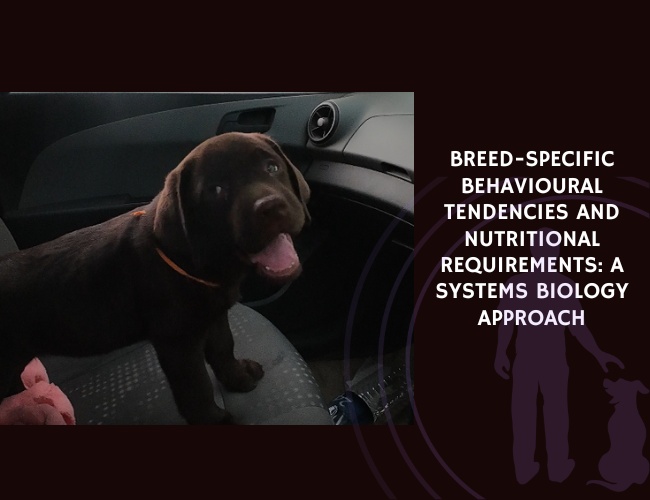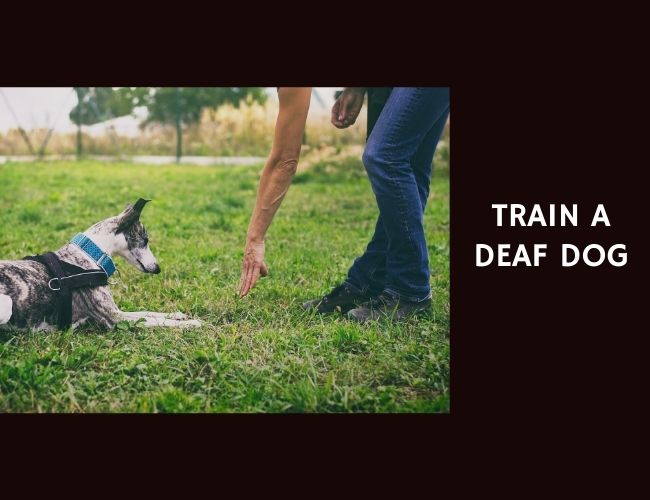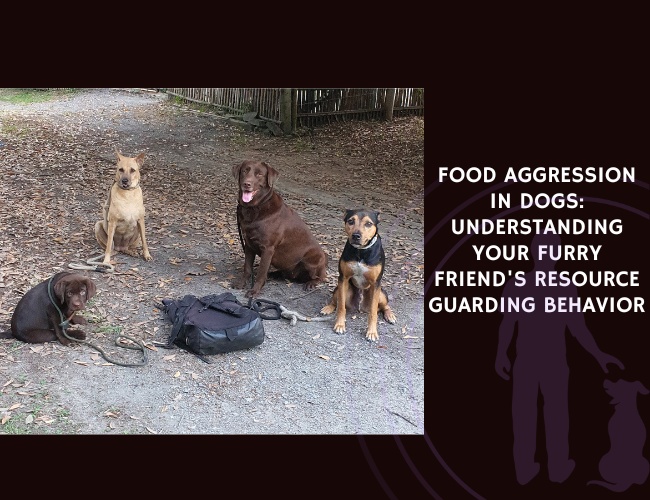Introduction: The Science Behind Your Furry Friend’s Unique Personality
Did you know that your dog’s breed explains only about 9% of their individual behavior? This surprising finding challenges everything we thought we knew about our canine companions. While your Border Collie might have that characteristic herding stare, or your Golden Retriever seems naturally friendly, the story behind these behaviors runs deeper than breed alone—it’s a fascinating interplay of thousands of years of evolution, selective breeding, and individual personality.
Let us guide you through the remarkable world of breed-specific traits, where cutting-edge science meets practical care. You’ll discover how your dog’s ancestral job description influences their modern-day quirks, why their nutritional needs might differ from the dog next door, and how understanding these connections can transform the relationship with your four-legged family member. Whether you’re sharing your life with a high-energy working breed or a devoted companion dog, this journey into canine biology will help you provide the personalized care your unique friend deserves. 🐾
Character & Behavior: Understanding Your Dog’s Inner World
The Ancestral Blueprint: How History Shapes Today’s Behaviors
Your dog carries within them a remarkable legacy—thousands of years of selective partnerships with humans that have shaped not just their appearance, but their very brain structure. When you watch your Pointer freeze mid-stride at the sight of a bird, or notice your Beagle’s nose hit the ground at the faintest scent, you’re witnessing ancient behavioral programs that predate modern breeds by millennia.
The Working Heritage Modern research reveals that these behavioral tendencies developed through what scientists call “polygenic adaptation”—changes across many genes over vast timescales. Your herding dog’s stalking posture, that intense focus that Border Collie owners know so well, emerged from generations of dogs selected for their ability to control livestock movement. Similarly, sight hounds like Greyhounds developed not just exceptional vision, but neuroanatomical variations in their brains specifically adapted for visual hunting.
Beyond Stereotypes Here’s where things get interesting—and perhaps surprising. Despite popular belief, a dog’s breed is actually a relatively poor predictor of individual personality. While certain traits show heritability rates above 25%, meaning they’re passed from parent to puppy, the vast behavioral variation within breeds tells us that your individual dog is far more than their breed label. This means your “aggressive breed” Pitbull might be the gentlest soul at the dog park, while that Golden Retriever might need more behavior support than expected.
The Decoupling Effect Scientists have discovered something fascinating about modern breeds: behaviors that once traveled together have become “temporally decoupled.” In ancient breeds, prosocial behaviors (like playfulness and sociability) and reactive behaviors (such as fearfulness and aggression) were linked. But in breeds developed over the last 160 years, these trait categories have separated. This explains why you might meet a German Shepherd who’s incredibly social but also highly reactive, or a Bulldog who’s fearless but not particularly playful.
Behavioral Syndromes: Reading Your Dog’s Personality Profile
Understanding your dog means looking beyond breed to recognize their individual behavioral syndrome—their unique cluster of personality traits. You might notice your dog consistently shows certain patterns: perhaps they’re bold in new situations but also highly food-motivated, or maybe they’re cautious with strangers but intensely loyal to family.
The Domestication Syndrome Legacy Every domestic dog, from tiny Chihuahuas to massive Mastiffs, shares traits from what researchers call “domestication syndrome.” This includes not just behavioral changes like increased docility and prolonged juvenile behaviors, but physical changes too—floppy ears, varied coat colors, and those expressive eyebrows that melt your heart. These traits emerged together through our ancestors’ selection for tameness, creating the foundation for the human-dog bond we cherish today.
Individual Variation Within Breeds When evaluating your dog’s behavior, remember that mixed-breed dogs aren’t automatically healthier or better-behaved than purebreds—another myth that science has debunked. What matters more is understanding your individual dog’s needs, triggers, and motivations. That rescue mutt might need just as much behavioral support as a purebred, and that’s perfectly normal.
Vocalization & Communication: How Your Dog “Talks” to You
Decoding the Canine Language
Your dog is constantly communicating with you through a rich vocabulary of sounds, body postures, and facial expressions. While we often focus on barking, the full spectrum of canine communication is far more nuanced and breed-influenced than you might realize.
Breed-Specific Vocal Tendencies Some breeds were literally bred to be vocal—think of the melodious bay of a Beagle on a scent trail or the distinctive “talking” of Siberian Huskies. These vocalizations aren’t just noise; they’re purposeful communications shaped by centuries of selective breeding. Your Basenji might not bark traditionally, but their unique yodel serves the same communicative function. Understanding these breed tendencies helps you distinguish between normal breed behavior and potential concerns.
The Emotional Context Recent neuroimaging studies have shown that dogs process emotional information in voices similarly to humans, with specific brain regions lighting up in response to different emotional tones. When your dog whines at the door, growls during play, or gives that contented sigh as they settle for a nap, they’re conveying specific emotional states. The key is learning your individual dog’s vocal patterns—some dogs are naturally chattier than others, regardless of breed.
Multi-Modal Communication Dogs don’t rely on voice alone. Watch how your dog combines vocalizations with body language: a play bow accompanied by a play growl, a whimper paired with pawing, or silent but intense eye contact when they want something. These combined signals create a sophisticated communication system that strengthens your bond when you learn to read it accurately.
Training & Education: Nurturing Your Dog’s Cognitive Potential
The Neuroscience of Learning
Your dog’s brain is remarkably plastic, capable of forming new neural connections throughout their life. This neuroplasticity means that whether you have a puppy or a senior dog, learning and behavior modification remain possible. Understanding how your dog’s brain processes information can revolutionize your training approach.
Breed-Specific Learning Styles While all dogs can learn, different breeds may respond better to different training methods. Herding breeds often excel with movement-based training that engages their desire to control motion. Scent hounds might be more motivated by nose-work games that tap into their olfactory superpowers. Companion breeds frequently thrive on social rewards and praise. Recognizing these tendencies helps you tailor training to your dog’s natural inclinations.
The Biddability Factor Scientists have identified “biddability”—a dog’s responsiveness to human direction—as a highly heritable trait. This doesn’t mean some dogs are untrainable; it means some dogs are more naturally inclined to work with humans while others might need different motivation strategies. Your independent-minded Shiba Inu isn’t being stubborn; they’re expressing a different relationship with human guidance than a eager-to-please Labrador.
Cognitive Enrichment Through Training Training isn’t just about obedience—it’s cognitive enrichment that keeps your dog’s brain healthy. Research shows that dogs engaging in regular training and problem-solving activities maintain better cognitive function as they age. That “impossible task” where food is placed in an unreachable container? It’s actually a diagnostic tool veterinary behaviorists use to assess cognitive decline. Regular training challenges help prevent such decline.
Building Emotional Resilience
Modern training science emphasizes emotional wellness alongside behavioral compliance. Your dog’s ability to cope with stress, recover from startling events, and navigate new situations all stem from emotional resilience built through positive experiences.
The Amygdala Connection The amygdala, your dog’s emotional processing center, plays a crucial role in fear and anxiety responses. Some dogs may have what researchers call “amygdala hypersensitivity,” making them more reactive to potential threats. This isn’t a character flaw—it’s a neurobiological variation that requires patient, understanding training approaches focused on building confidence rather than suppressing reactions.
Positive Reinforcement and Brain Chemistry When you reward your dog with treats, play, or praise, you’re not just teaching behaviors—you’re triggering neurochemical changes. Dopamine release during positive training experiences strengthens neural pathways, making desired behaviors more likely to recur. This is why force-free, reward-based methods aren’t just kinder; they’re more neurologically effective for long-term learning.

Performance & Activities: Matching Exercise to Your Dog’s Design
The Working Dog Advantage
If you share your life with a breed originally developed for work—whether herding, hunting, guarding, or pulling—you’re living with an athlete. These dogs possess not just physical capabilities but neurological adaptations that influence their exercise needs and activity preferences.
Metabolic Adaptations Working breeds often have enhanced metabolic efficiency. Research on police and military dogs reveals that during intensive exercise, their bodies can effectively utilize circulating triglycerides for muscle energy through beta-oxidation. This means your working breed doesn’t just need exercise; they’re physiologically optimized for it. Denying them adequate physical activity is like asking a marathon runner to stay on the couch—it goes against their biological programming.
Scent Detection Superpowers For breeds with exceptional olfactory abilities, mental exercise through scent work can be as tiring as physical exercise. Brain imaging studies show that when dogs process scents, multiple brain regions activate simultaneously—the amygdala, piriform cortex, and posterior cingulate cortex all work together to classify and remember odors. Engaging these systems through nose work provides profound mental stimulation that satisfies deep-seated drives.
Age-Appropriate Activities Your dog’s exercise needs change throughout their life. Senior dogs show decreased energy requirements, but maintaining appropriate activity levels supports cognitive function. The key is adapting activities to your dog’s life stage: high-impact activities for young adults, sustained moderate exercise for middle-aged dogs, and gentle, mentally engaging activities for seniors.
Lifestyle Enrichment Strategies
Creating a fulfilling life for your dog means understanding their breed-specific drives and channeling them appropriately. Your terrier’s desire to dig, your retriever’s need to carry objects, or your hound’s urge to follow scents aren’t problems to suppress—they’re opportunities for enrichment.
Environmental Enrichment Design Think of your home and yard as your dog’s habitat. For high-energy breeds, consider agility equipment or regular hiking adventures. For scent-driven breeds, hide treats or toys for finding games. Herding breeds might benefit from activities that involve gathering and organizing, even if it’s just their toys. These targeted enrichments prevent behavioral problems by satisfying innate drives in appropriate ways.
Social Enrichment Needs Some breeds were developed to work closely with humans (like companion breeds) while others worked more independently (like livestock guardians). Understanding your dog’s social needs helps you provide appropriate interaction levels. Your Cavalier King Charles Spaniel might thrive as your constant companion, while your Akita might appreciate some independent time.
Nutritional Requirements: Fueling Your Dog’s Unique Biology
The Science of Breed-Specific Nutrition
While all dogs share basic nutritional needs, the remarkable diversity among breeds extends to their metabolic and physiological requirements. Your Greyhound’s lean muscle mass creates different protein needs than a Bulldog’s compact build, and your Border Collie’s intense activity level demands different energy sources than a Pekingese’s more sedentary lifestyle.
The Macronutrient Target Fascinating research reveals that when given choice, adult dogs across various breeds naturally regulate their intake to achieve a remarkably consistent ratio: approximately 30% protein, 63% fat, and 7% carbohydrates by energy. This “dietary target value” appears conserved across breeds, suggesting an evolutionary optimum. However, how dogs achieve this target can vary based on their activity level, age, and metabolic rate.
Metabolic Variations by Size Large breeds face unique challenges. Their slower metabolic rate per pound of body weight means they actually need fewer calories per pound than small breeds. Giant breeds also have different calcium and phosphorus requirements during growth to prevent developmental orthopedic diseases. Getting these ratios wrong during puppyhood can have lifelong consequences for your Great Dane or Saint Bernard.
Working Dog Nutrition If your dog performs regular intensive exercise—whether they’re a working dog or just highly active—their nutritional needs shift dramatically. Studies on police dogs show that dietary enrichment with marine fish oils improves oxidative status and positively influences lipid profiles. These omega-3 fatty acids don’t just support joint health; they’re crucial for managing the inflammatory response to intense exercise.
Cognitive Function and Diet
The connection between what your dog eats and how their brain functions is more profound than many realize. Diet-induced changes can affect everything from learning ability to emotional regulation, with implications for training success and quality of life.
Brain Food for Smart Dogs Research demonstrates that specific nutrients can support cognitive function throughout your dog’s life. Antioxidants like vitamin E and C, along with omega-3 fatty acids, help protect neural tissue from oxidative damage. For working breeds requiring intense focus—think search and rescue dogs or competition animals—these nutrients become even more critical for maintaining peak cognitive performance.
The Polyphenol Promise While much research comes from laboratory animals, studies suggest that polyphenol-enriched diets can improve memory and learning by restoring brain monoaminergic neurotransmitters and supporting hippocampal health. These compounds, found in ingredients like blueberries and green tea extract, offer neuroprotective effects that might help your senior dog maintain mental sharpness.
Gut-Brain Axis Emerging research reveals the profound connection between digestive health and behavior. Your dog’s gut microbiome influences neurotransmitter production, potentially affecting mood and behavior. This means that digestive issues might manifest as behavioral changes, and conversely, dietary interventions could support behavioral modification efforts.
Heritage. Biology. Bond.
History leaves its mark. Your dog’s behaviours are shaped by thousands of years of selective breeding, where instinct and adaptation forged the foundation of their modern personality. Recognising these inherited patterns allows you to guide them with understanding rather than assumption.
Beyond the breed label. While breed influences tendencies, it explains only a fraction of individual behaviour. Each dog’s unique combination of traits, shaped by both ancestry and life experience, deserves a tailored approach that meets their specific needs.
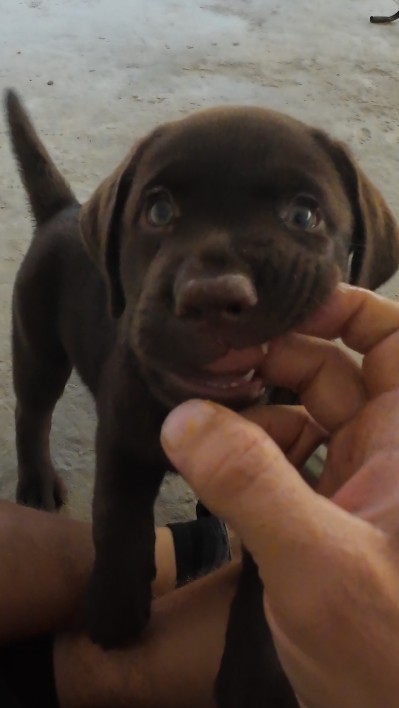
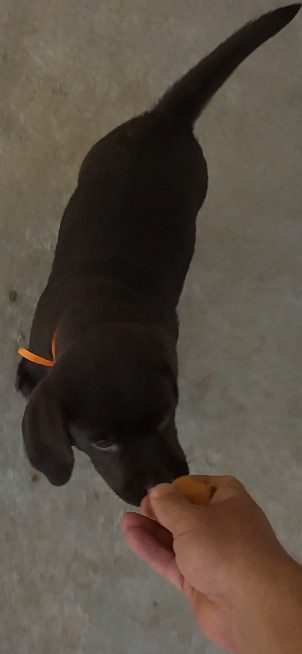

Connection drives learning. Communication, trust, and respect for your dog’s cognitive abilities form the true training foundation. When you respond to their signals and nurture their mental potential, you create a partnership that transcends commands.
Special Dietary Considerations
Understanding your breed’s predispositions helps you make informed nutritional choices that prevent problems before they start.
Kidney and Urinary Health Certain breeds show increased susceptibility to kidney stones and urinary issues, particularly intact male dogs. High protein and mineral content, combined with insufficient water intake, can increase risk. If you have a Dalmatian (prone to urate stones) or a Miniature Schnauzer (calcium oxalate stones), working with your veterinarian to design an appropriate diet becomes crucial for prevention.
Alternative Diet Considerations The growing interest in raw and homemade diets requires careful consideration. While these diets might meet protein requirements, research shows they often lack essential minerals like selenium, copper, zinc, potassium, calcium, iron, and magnesium. If you choose alternative feeding methods, professional formulation becomes essential to avoid deficiencies that could impact your dog’s behavior and health.
Life Stage Nutrition Your dog’s nutritional needs evolve throughout their life. Puppies require carefully balanced calcium and phosphorus for proper skeletal development. Adult maintenance needs vary by activity level. Senior dogs often benefit from adjusted protein levels to maintain muscle mass while supporting kidney function. Understanding these transitions helps you adjust your dog’s diet proactively rather than reactively.
Health Concerns: Breed-Specific Vulnerabilities and Prevention
Genetic Predispositions and Behavioral Health
The selective breeding that gave us distinct dog breeds also concentrated certain genetic variations, some beneficial and others potentially problematic. Understanding your breed’s health vulnerabilities empowers you to provide preventive care and early intervention.
Neurological Considerations Some breeds carry genetic variations affecting brain function and behavior. For instance, certain lines might show increased prevalence of anxiety disorders, compulsive behaviors, or cognitive dysfunction. These aren’t character flaws but biological variations requiring medical and behavioral support. Recognizing early signs—like excessive licking in German Shepherds or shadow chasing in Border Collies—allows for timely intervention.
The Exercise-Health Connection Your breed’s original purpose influences their optimal exercise type and injury risk. Breeds with long backs and short legs, like Dachshunds, face increased intervertebral disc disease risk with high-impact activities. Conversely, high-energy breeds denied adequate exercise might develop behavioral problems that masquerade as training issues but actually stem from unmet physical needs.
Sensory Health and Behavior Breed-specific sensory variations affect behavior in surprising ways. Brachycephalic (flat-faced) breeds might show increased anxiety due to breathing difficulties. Breeds prone to early vision loss might become more reactive as their sight deteriorates. Understanding these connections helps you distinguish between behavioral problems and medical issues requiring veterinary attention.
Preventive Strategies Through Lifestyle
Your daily choices profoundly impact your dog’s long-term health trajectory. By aligning lifestyle with breed-specific needs, you’re not just preventing problems—you’re optimizing your dog’s potential for a long, fulfilling life.
Weight Management by Body Type Different breeds carry weight differently, and what’s healthy for one might be problematic for another. Sight hounds naturally maintain very lean body condition, while northern breeds might carry more body fat for insulation. Understanding your breed’s optimal body condition helps you avoid both obesity (linked to numerous health problems) and unnecessary worry about a naturally lean dog.
Environmental Modifications Simple environmental changes can prevent breed-specific problems. Elevated food bowls for deep-chested breeds prone to bloat, ramps for breeds susceptible to joint problems, or cooling mats for brachycephalic breeds struggling with heat regulation—these modifications aren’t luxuries but preventive healthcare.

Lifestyle & Environment: Creating the Perfect Home
Matching Home to Heritage
Your dog’s breed heritage influences their environmental needs in ways you might not expect. That apartment-dwelling Greyhound might actually be perfectly content with their couch-potato lifestyle, while your suburban Beagle might be frustrated without adequate scent-exploration opportunities.
Space Versus Stimulation Contrary to popular belief, size doesn’t determine space needs—energy level and stimulation requirements do. Your Jack Russell Terrier might need more environmental enrichment in a house with a yard than a Great Dane would. Understanding this helps you create appropriate environments regardless of your living situation.
Climate Considerations Breed origins influence climate tolerance more than many realize. Your Siberian Husky’s double coat makes summer challenging, while your Chinese Crested might need winter clothing for basic comfort. These aren’t just comfort issues—temperature stress affects behavior, training responsiveness, and overall health.
Social Environment Design Your breed’s social heritage influences their household needs. Breeds developed for independent work might struggle in chaotic multi-pet homes, while pack-oriented breeds might develop separation anxiety as single dogs. Recognizing these needs helps you structure your household for success.
Daily Routine Optimization
Creating routines that honor your dog’s biological rhythms and breed tendencies transforms daily life from management to enrichment.
Activity Cycling Most dogs show natural activity patterns—often crepuscular (dawn and dusk active) tendencies inherited from their wolf ancestors. Working with these rhythms rather than against them improves behavior and wellbeing. Your herding dog’s evening “zoomies” aren’t misbehavior—they’re expressing natural activity patterns.
Feeding Schedules and Behavior When and how you feed affects more than nutrition. Puzzle feeders for intelligent breeds prevent boredom. Multiple small meals might suit breeds prone to bloat. Scheduled feeding times can actually reduce anxiety by providing predictable structure. These feeding strategies become behavioral interventions supporting overall wellness.
Rest and Recovery Different breeds have different sleep needs. Working breeds might need enforced rest periods to prevent overexertion, while companion breeds might naturally self-regulate. Understanding your breed’s rest requirements helps you recognize when increased sleeping signals health issues versus normal behavior.
Senior Care: Adapting to Your Aging Companion
Cognitive Aging and Breed Differences
As your dog enters their golden years, breed-specific traits influence how they age. Large breeds might show physical aging earlier but maintain cognitive sharpness, while small breeds might stay physically spry but show earlier cognitive changes.
Recognizing Cognitive Dysfunction The “impossible task” test—where dogs try to access unreachable food—can reveal early cognitive decline. If your previously problem-solving dog stops trying or shows confusion, it might signal cognitive changes requiring intervention. Early recognition allows for dietary supplements, environmental modifications, and medications that can slow progression.
Maintaining Mental Fitness Senior dogs benefit enormously from continued mental stimulation adapted to their capabilities. Your elderly Border Collie might not herd sheep anymore, but puzzle toys and scent games can maintain cognitive function. Research shows that dogs maintaining training activities throughout life show better cognitive preservation.
Nutritional Support for Aging Brains Senior diets aren’t just about joint support and reduced calories. Nutrients like medium-chain triglycerides (from coconut oil) can provide alternative brain fuel when glucose metabolism declines. Antioxidants become increasingly important for protecting aging neural tissue. These nutritional interventions can meaningfully extend cognitive healthspan.
Quality of Life Optimization
Your senior dog’s needs change, but their capacity for joy remains. Understanding breed-specific aging patterns helps you adapt care while maintaining quality of life.
Pain Management and Behavior Breed-specific orthopedic issues often manifest as behavioral changes. Your Labrador’s newfound grumpiness might stem from hip pain, while your Dachshund’s reluctance to jump might signal back problems. Recognizing pain’s behavioral manifestations enables early intervention, preserving your dog’s comfort and your bond.
Social Needs in Senior Dogs Aging can alter social preferences. Your previously social dog might become more selective about canine friends, or your independent breed might seek more human comfort. These changes are normal adaptations, not problems to fix. Honoring these evolving needs supports emotional wellbeing during aging.
End-of-Life Considerations Different breeds show different end-of-life patterns. Giant breeds might maintain quality of life until sudden decline, while small breeds might show gradual changes over years. Understanding your breed’s typical aging trajectory helps you make informed, compassionate decisions when that difficult time arrives.
Conclusion: Is This Approach Right for You and Your Dog?
After exploring the intricate connections between breed heritage, behavior, and nutrition, you might wonder: how do I apply all this knowledge to my unique dog? The answer lies not in rigid breed-based rules but in informed, individualized care that honors both your dog’s genetic heritage and their individual personality.
Remember that surprising statistic from the beginning—breed explains only 9% of individual dog behavior. This means your dog is so much more than their breed label. They’re a unique individual whose needs arise from the complex interplay of genetics, early experiences, training, and your ongoing relationship. The breed-specific insights we’ve explored provide a framework, not a prescription.
Your Next Steps
Start by observing your dog with fresh eyes. Notice their natural activity patterns, their preferred play styles, their stress signals, and their joy triggers. Consider having their body condition assessed by your veterinarian and discussing whether their current diet aligns with their activity level and life stage. Evaluate whether their daily routine honors their biological needs or fights against them.
Most importantly, remember that understanding your dog’s breed-specific tendencies isn’t about limitations—it’s about possibilities. When you know that your terrier’s digging isn’t defiance but ancestral programming, you can channel it appropriately. When you understand that your guardian breed’s aloofness with strangers isn’t unfriendliness but ancient protective instinct, you can work with it rather than against it.
The Path Forward
The scientific revolution in understanding canine behavior and nutrition offers unprecedented opportunities for enhancing our dogs’ lives. By combining breed-specific insights with attention to individual variation, we can provide truly personalized care. This means:
- Choosing activities that fulfill breed-specific drives while respecting individual preferences
- Designing nutrition plans that support your dog’s unique metabolic needs and life stage
- Creating environments that honor both heritage and personality
- Building training approaches that work with your dog’s learning style, not against it
- Recognizing when behavior might signal underlying health issues requiring attention
Your dog depends on you to interpret their needs and advocate for their wellbeing. Armed with this knowledge, you’re equipped to provide care that goes beyond basic needs to truly optimize their physical health, cognitive function, and emotional wellbeing.
The journey of understanding your dog never really ends—and that’s the beauty of it. Each day brings new opportunities to observe, learn, and strengthen your bond. Whether you’re navigating puppyhood with a high-energy working breed or supporting a senior companion through their golden years, the combination of breed knowledge and individual attention creates the foundation for a remarkable partnership.
As you close this guide and look at your furry friend—maybe they’re sleeping at your feet or watching you with those expressive eyes—remember that you’re not just their owner. You’re their interpreter, their advocate, and their bridge to a human world they navigate through trust in you. Use this knowledge wisely, compassionately, and always in service of the unique, irreplaceable individual who shares your life.
After all, in the end, it’s not about having the perfect breed or following the perfect protocol—it’s about understanding and loving the perfectly imperfect dog who chose you as their human. 🧡

